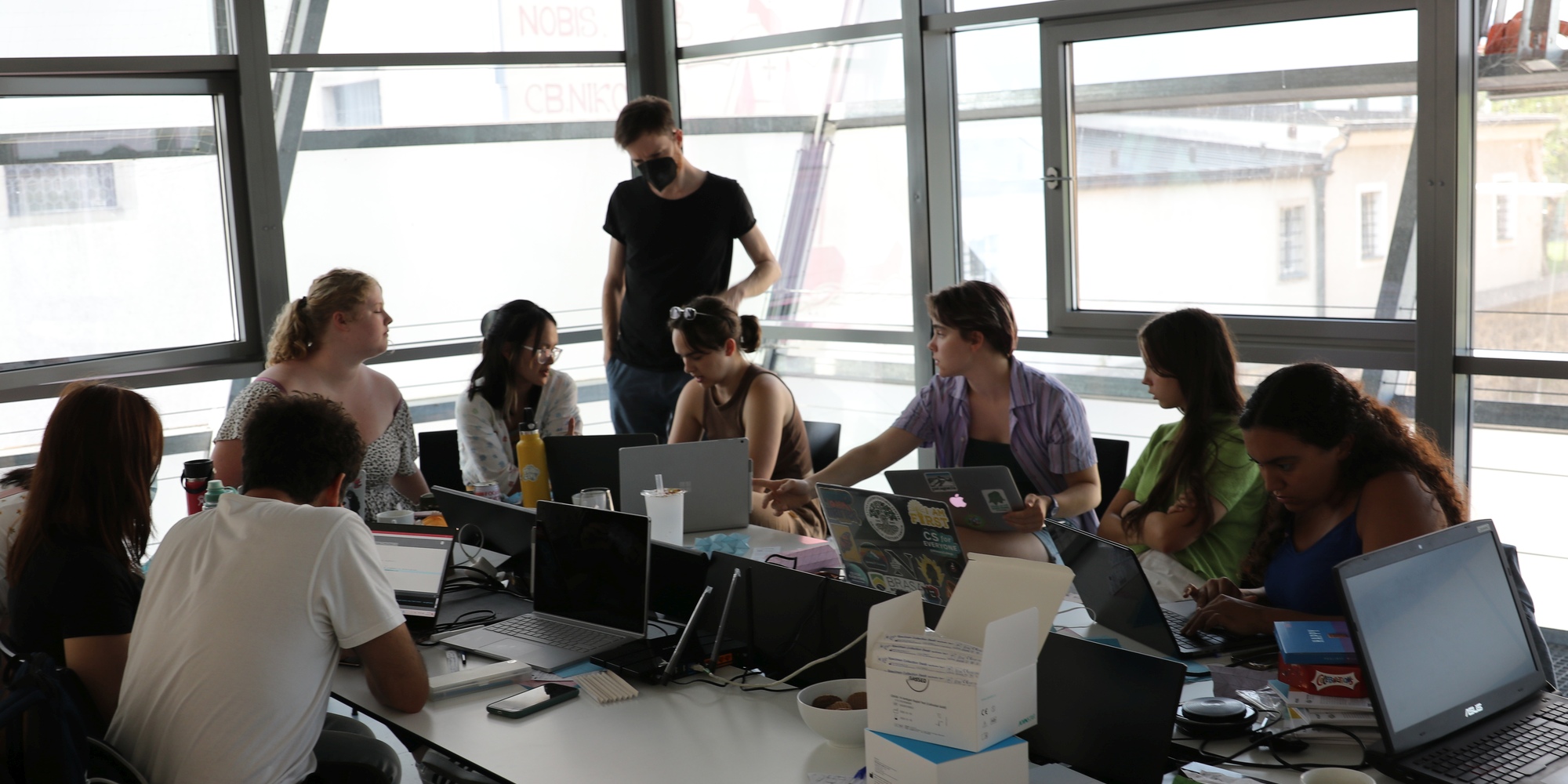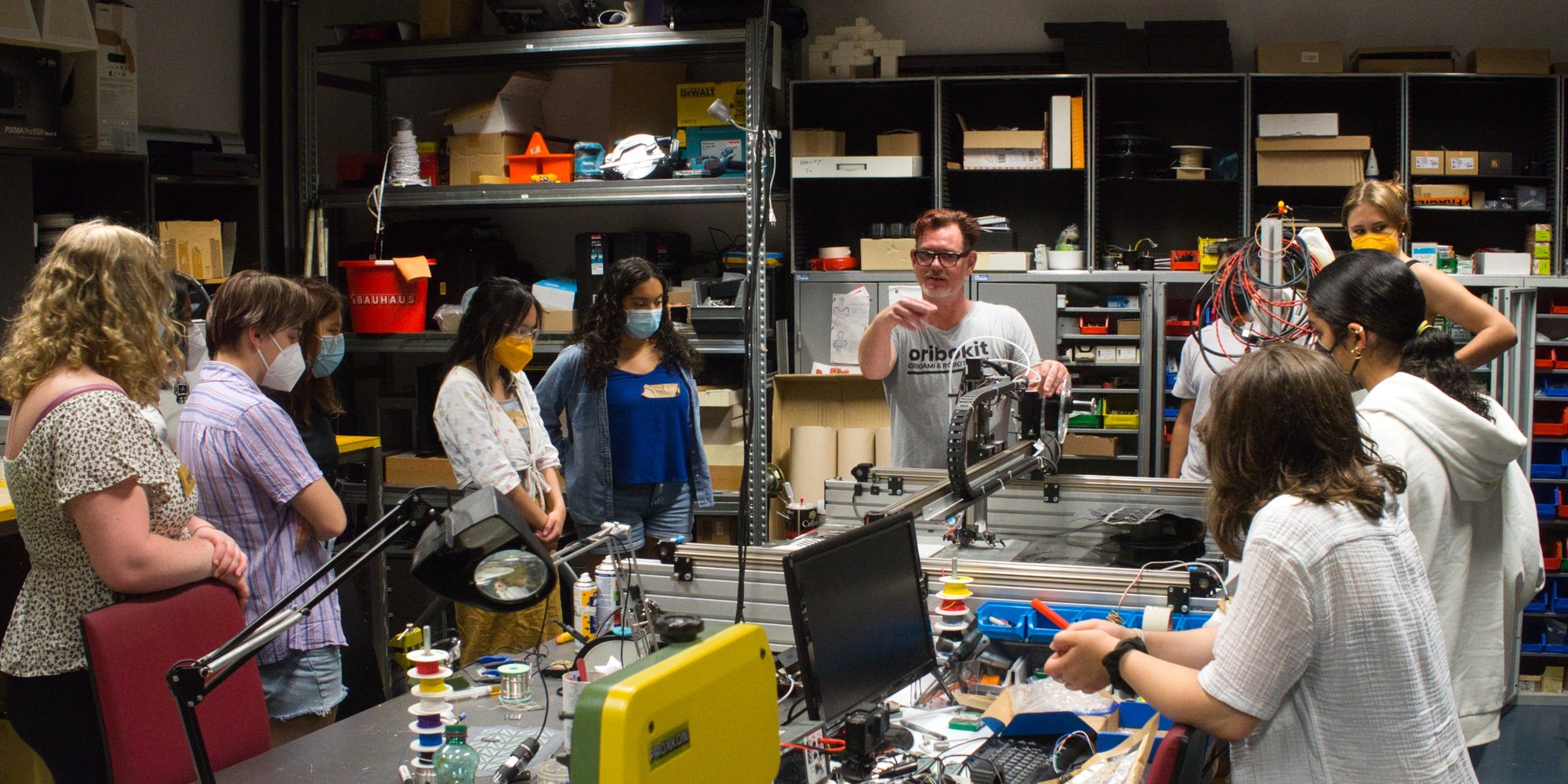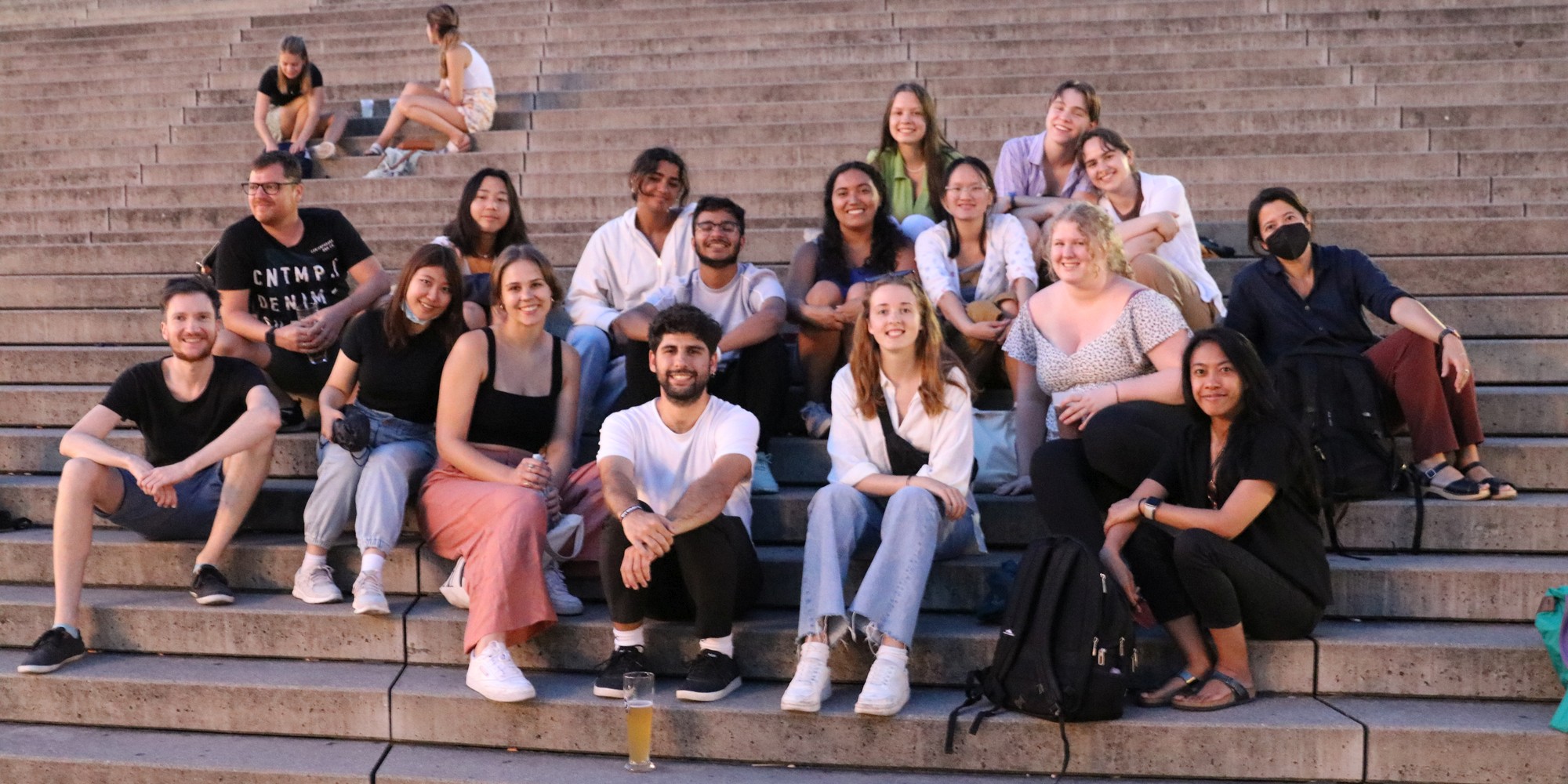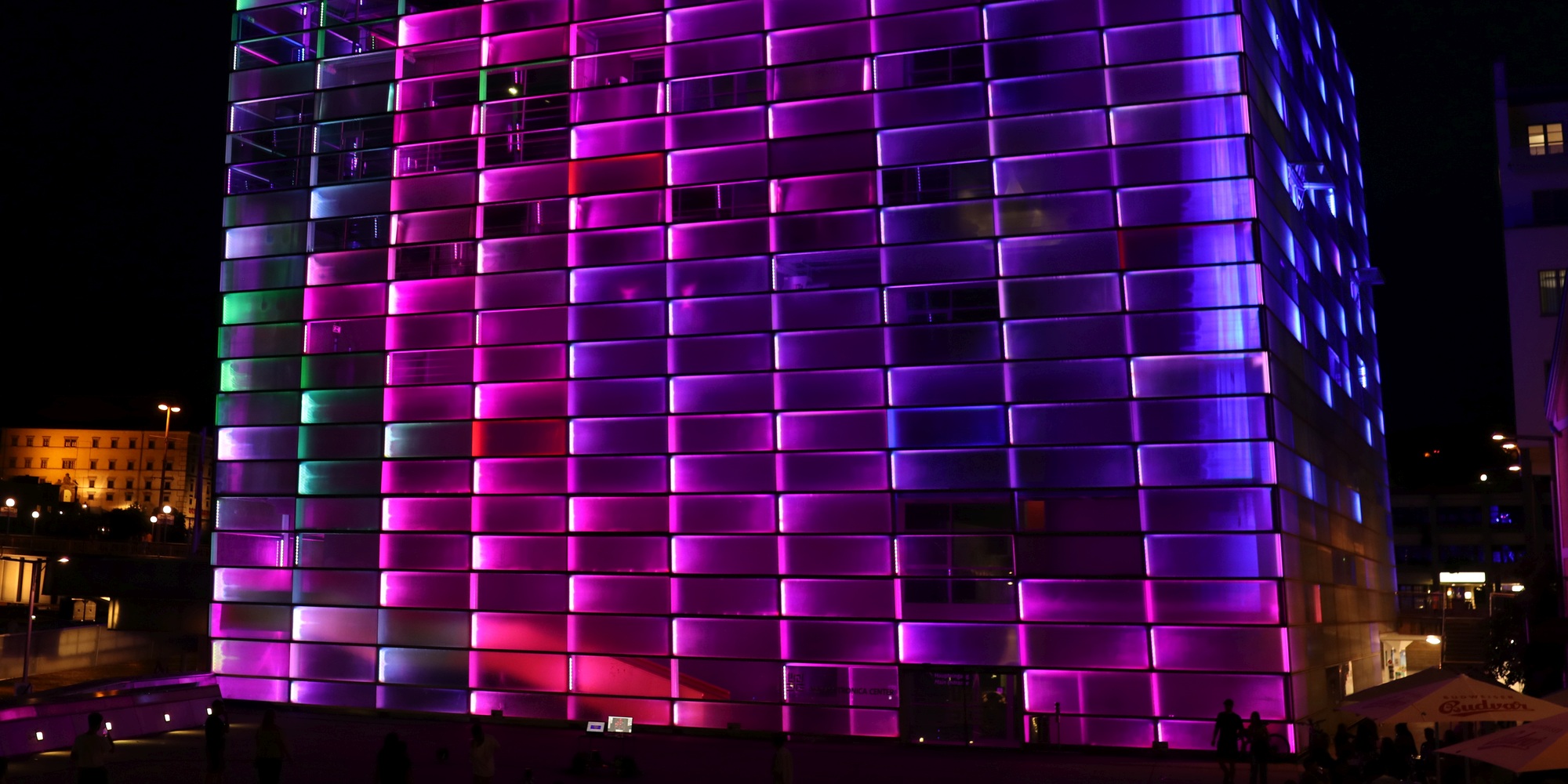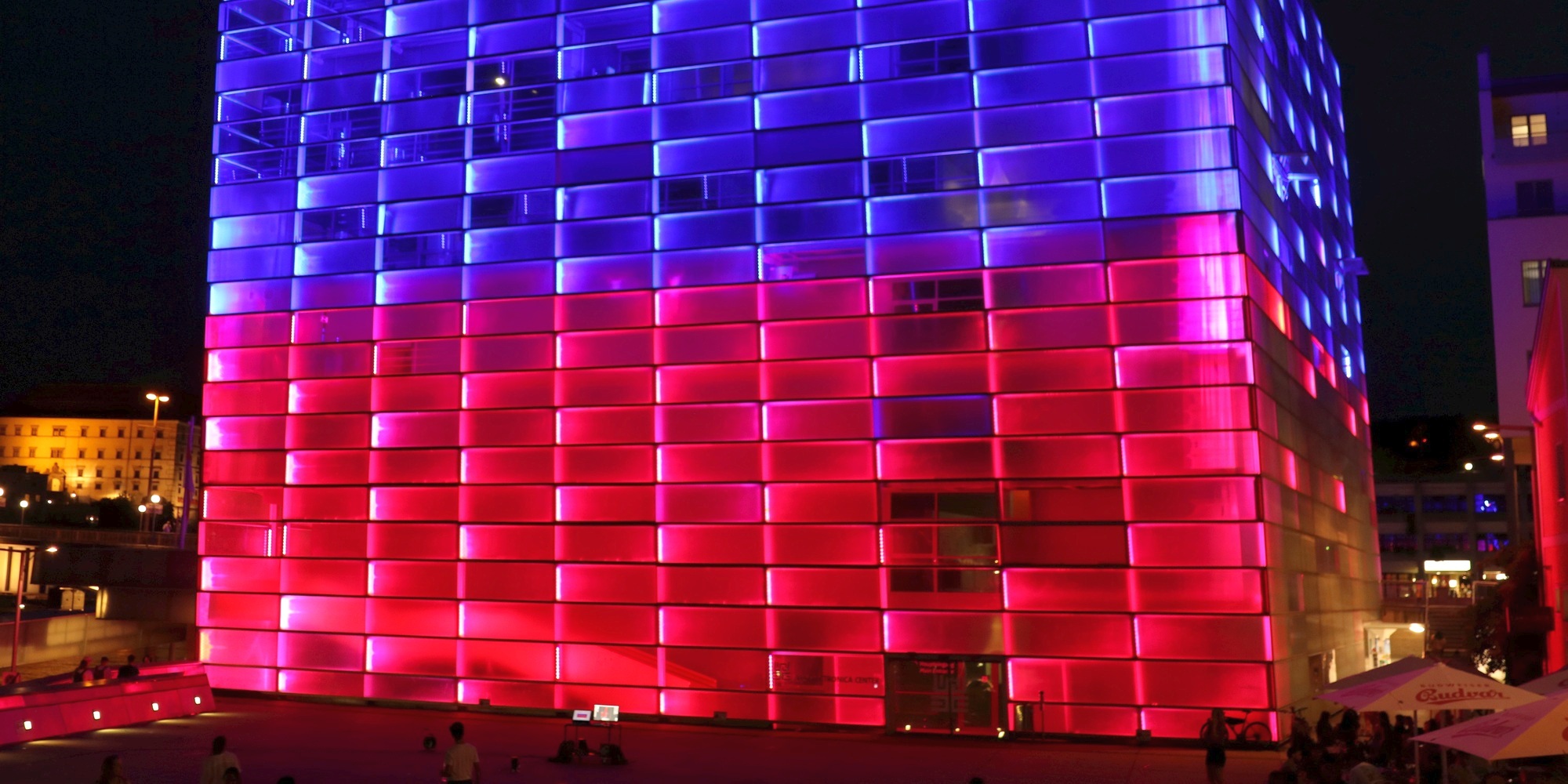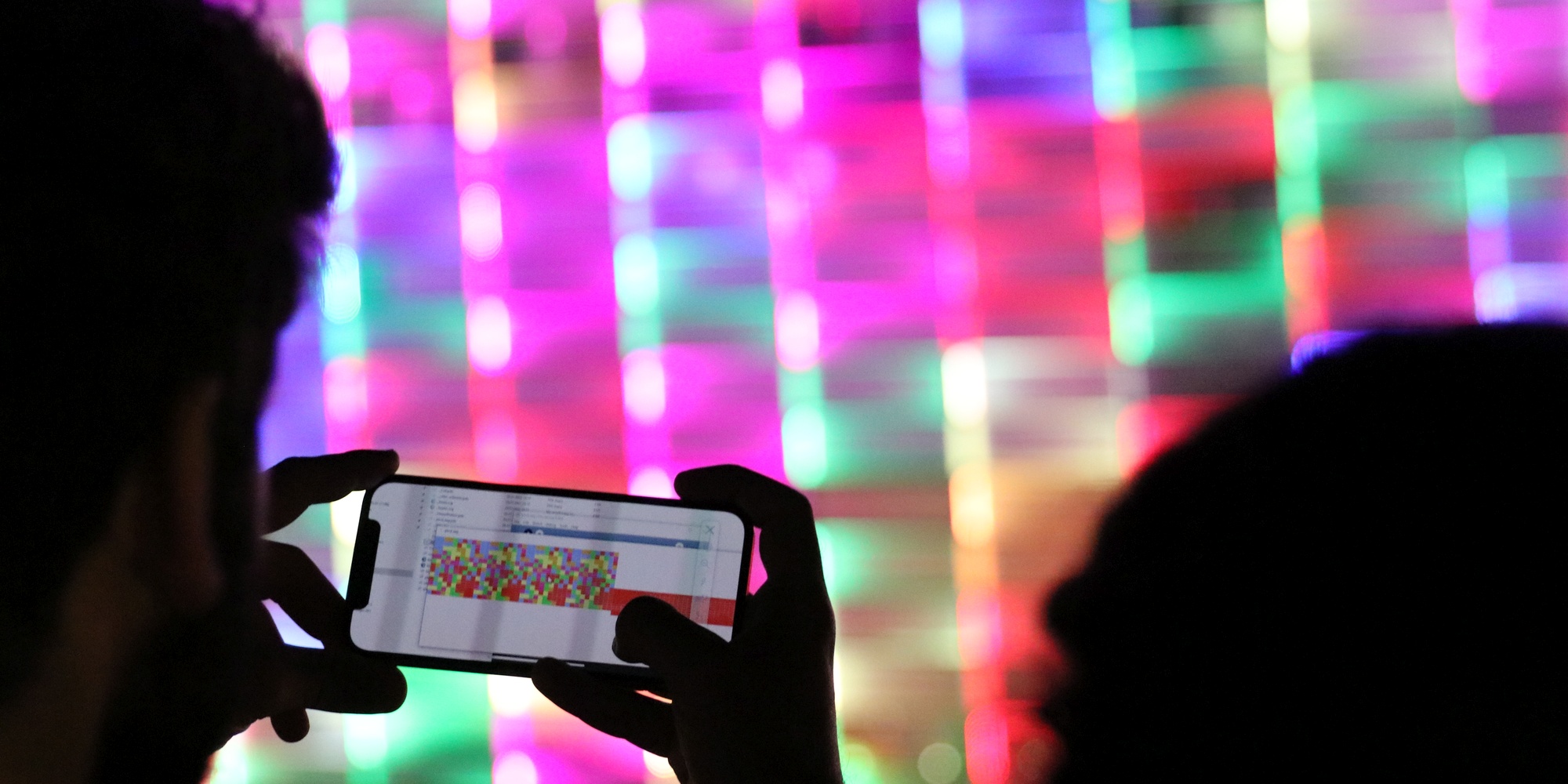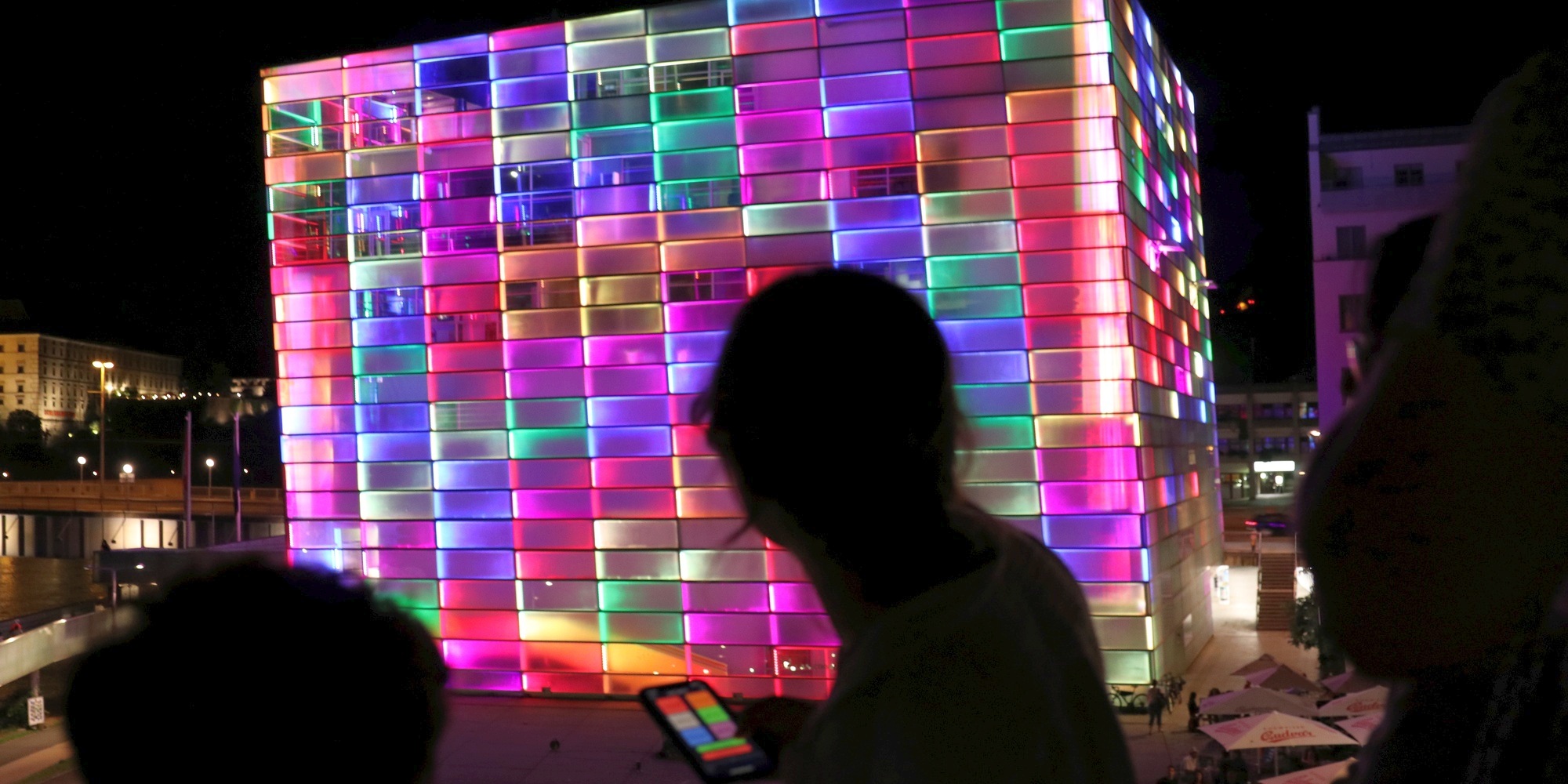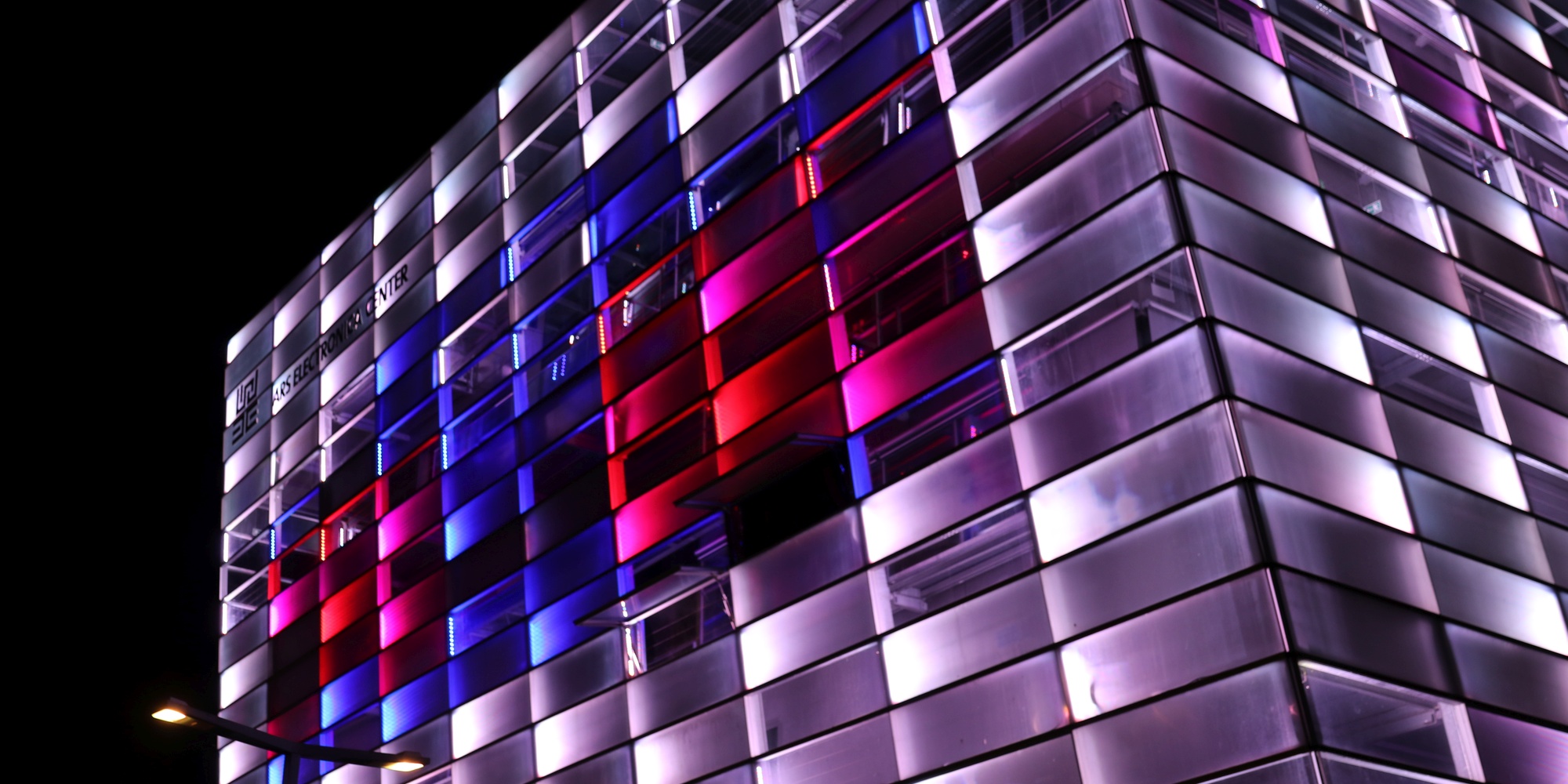Im Juli 2022 lud das Futurelab-Team zum zweiten Mal Studierende der Northeastern University (Boston, USA) zu einem dreitägigen interaktiven Kunstworkshop ein. Ziel war die Gestaltung der Ars-Electronica-Fassade – das leuchtende, bunte Herzstück der Stadt und die zweite Haut des Ars Electronica Center.
In der Ars Electronica Futurelab Academy fordern wir die Kreativität der Studierenden in Workshops, Seminaren und projektbezogenen Mentoring-Sitzungen heraus. Für die Studierenden ist der praxisnahe Ansatz des Futurelab, gepaart mit dem Potenzial und den Möglichkeiten des Ars-Electronica-Ökosystems, eine einzigartige Gelegenheit, ihre Ideen und Fähigkeiten weiterzuentwickeln; für uns Futurelab-Forscher*innen sind der Dialog und der Strom neuer Ideen mehr als willkommen.
Welche*r Design- und Kunststudierende wäre nicht begeistert, ein ganzes Gebäude mit der eigenen ästhetischen Vision zu einzukleiden? In vier Gruppen gelangten die Studierenden in zweieinhalb Tagen vom Brainstorming zu einem fertigen Programm mit interaktiven Komponenten, wobei sie von unseren Forscher*innen intensiv unterstützt wurden, wenn es darum ging, Konzepte schnell zu verdichten oder die wesentlichen Komponenten in der Creative Coding Programmiersprache Processing zu codieren. Die Ergebnisse reichten von Musikvisualisierung bis hin zu verschiedenen Spielen, die man durch Bewegung oder in einem Fall sogar durch eine Smartphone-App steuern konnte.
Die Resultate wurden an einem Sommerabend in einer Präsentation auf dem Ars Electronica Maindeck getestet, die sofort die Aufmerksamkeit des Publikums erregte und für Gesprächsstoff sorgte. Die Beziehung zwischen dem Gebäude, dem öffentlichen Raum um es herum und den Menschen, die in der Stadt leben, arbeiten und spielen, birgt unendlich viele Facetten, die es zu erforschen gilt. Mit viel Kreativität und der Enthusiasmus ergründeten die Studierenden die reiche Ausdruckskraft eines solchen räumlichen Mediums.
DIE PROJEKTE:
F!REFLY
Linda Yan, China Qin
F!REFLY ist ein interaktiver Glühwürmchensimulator, der das kindliche Staunen beim Fangen von Glühwürmchen nachahmt. Mit Hilfe von Motion Tracking und der Fassade des Ars Electronica Center ermöglicht dieses Programm den Benutzer*innen, die das Gelände betreten, ein buntes Glühwürmchen zu übernehmen und an der Fassadenfront entlang zu laufen, um weiße Glühwürmchen zu „fangen“ – so werden diese in die eigene Farbe der User*in verwandelt.
„Der ursprüngliche Gedanke hinter F!REFLY war es, die Leuchtmuster und Flugbahnen von Glühwürmchen nachzubilden und dabei über die biologische Vielfalt und die Formation und mathematische Bewegung der Natur nachzudenken. Mit Unterstützung des Futurelab und der Leistungsfähigkeit von Processing entwickelte sich das ursprüngliche Konzept zu einem farbenfrohen, von der Kindheit inspirierten Glühwürmchenspiel. Wir entwickelten “Glühwürmchen”-Animationen, implementierten das Tracking der Menschen am Maindeck mittels TUIO-Schnittstelle und erstellten zuletzt den Farb-Algorithmus, der die Grundlage des Spiels darstellt.“
Ribbles
Ashlynn Braisted, Erica Sammarco, Isabel Silva
Ribbles bietet dem Publikum ein unvergessliches Erlebnis durch Interaktion und Farbkontinuität an der Fassade des Ars Electronica Center. Die Bewegung auf dem Maindeck wird eingefangen und als Fadenkreuz auf allen Seiten des Gebäudes dargestellt. Diejenigen, die sich auf dem Maindeck befinden, werden sich selbst suchen und mit anderen zusammenarbeiten, um eine Farbexplosion auszulösen. Diejenigen, die nicht mit der Fassade interagieren, werden in den Spaß hineingezogen, wenn sie sehen, wie die Explosion das Gebäude umhüllt, gefolgt von einer Animation, die das Spielfeld zurücksetzt. Auch ohne die Interaktion laufen die Animationen in einer Schleife ab und begeistern Betrachter*innen von nah und fern durch eine Rotation leuchtender Farben.
„Unser Ziel bei Ribbles war es, den Nutzer*innen die Möglichkeit zu geben, aktiv miteinander in Kontakt zu treten, motiviert durch die Möglichkeit, mit einem groß angelegten öffentlichen Kunstwerk zu interagieren. Die Vielfalt der leuchtenden Bilder bringt Leben in das Gebäude und trägt dazu bei, Passant*innen mit der Ars Electronica zu verbinden.“
Pixel Tag
Chloe Strandwold, Jenny Norvold, Megan Lam
Pixel Tag ist ein interaktives Spiel für eine*n Spieler*in, die bzw. der gegen den Computer antritt und versucht, die Fassade mit einer einzigen Farbe zu füllen, bevor der Computer es tut. Die Fassade füllt sich mit zufällig generierten farbigen Pixeln. Die oder der Spieler*in beginnt in einer Ecke und wählt auf em eigenen iPhone aus, welche Farbe zuerst absorbiert werden soll, um die Präsenz der Farben auf der Fassade zu erhöhen. Spieler*in und Computer wählen abwechselnd die gewünschte Farbe, wobei die Treppe die zuletzt gewählte Farbe widerspiegelt. Das Spiel wird auf jeder Seite der Fassade wiedergegeben, aber für ein optimales Spiel sollte vom Maindeck aus gespielt werden. Wer das letzte Plättchen flutet, hat gewonnen. Die Gewinnerfarbe führt zu lustigen Animationen.
Wird das Spiel nicht aktiv gespielt, zeigt die Fassade den Computer, der Pixel Tag gegen sich selbst spielt. Der Stil und die Farbpalette dieses interaktiven Spiels sind von klassischen Videospielen wie “Flood It”, “Candy Crush”, “Tetris” und anderen inspiriert. Darüber hinaus hat sich dieses Spiel speziell von der klassischen Pixel-Animation inspirieren lassen.
For the Record
Sarah Abeywardena, Lauren Koelsch, Zaneer Mitha
For the Record verwandelt die Fassade des Ars Electronica Center durch die Kombination von lebendigen Animationen und visuellen Elementen, die auf Musik reagieren, in einen Live-Musikvisualisierer. Die Betrachter*innen dieses Projekts können die akustische Stimulation der energiegeladenen Musik erleben und gleichzeitig die visuellen Animationen beobachten, die sich zu einem immersiven Erlebnis verbinden. Die Seiten der Fassade wechseln zwischen kurzen Animationen verschiedener Art, während die Vorderseite des Gebäudes eine Flüssigkeit zeigt, die auf den gespielten Song reagiert. Durch dieses Projekt wird den Besucher*innen der Ars Electronica eine völlig neue Art des Musikgenusses geboten.
Credits
Ars Electronica Futurelab: Matthew Gardiner, Peter Holzkorn, Otto Naderer, Anna Weiss, Yoko Shimizu, Georgios Tsampounaris
Thanks to Kate Terrado, Fiona Gridley and Kara Braciale from Northeastern Univeristy
Thanks to AE Technical Services / IT Services


